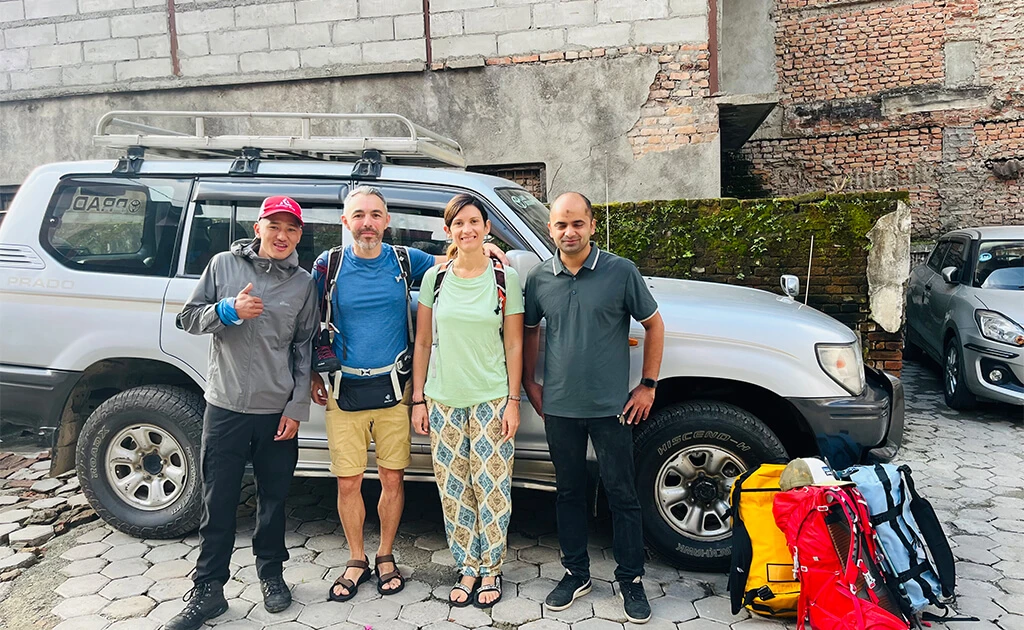Best Season
Everest Base Camp via Salleri trek falls under the strenuous category as the trekkers will be climbing above the altitude of 5,555 m Kala Patthar. If you’re physically fit, you’re good to go. Otherwise, the trek may be a little difficult for you. The unpredictable climate changes also make this trek challenging. However, the trek starts from a lower elevation than Lukla, so you have get enough days to acclimatize. We suggest doing regular exercise before you decide to come on this trek. The ideal times to trek the EBC by road are in March to May and October to November. The road from Salleri to surke would not be good enough during the Monsoon season. It's important to avoid planning this trek during this season because the roads are not fully paved. Consequently, heavy monsoon rainfall is highly likely to degrade road conditions and create challenges during the journey. Among the three seasons, spring and autumn are recommended as the best times for the Everest Base Camp Drive-In and Drive-Out trek.
Accommodation and Meals
The accommodations are accessible on a shared basis. Higher-altitude lodging will typically have fewer amenities. Some locations in the Everest region will have hot showers accessible. You may need to pay extra for hot water, and the availability of hot water can vary from place to place. Teahouses are the most common and popular form of accommodation in the Everest region. These are small guesthouses or lodges that offer basic rooms with twin beds and shared bathrooms. The quality and comfort of teahouses can vary widely, from very basic to more comfortable ones with attached bathrooms in lower-altitude areas. In higher-altitude locations, teahouses are typically more basic. Everest region, you will share a dinner table in a room with individuals from many cultures who gather there to converse, laugh, and exchange experiences. You will be served with the friendly hospitality of the Sherpa people as well as dishes like dal-bhat (rice, pickles, lentils, and veggies), noodles, potatoes, and soup, among other things.
Internet and ATMs
There are various options for the internet in the Everest Region: the dedicated ISP for the Everest Region, Everest Link, as well as the mobile network provider NCell and NTC. If you need to get connected to your family, friends, or employers throughout the trek, Everest Link Wi-Fi cards are the best options. It is a single internet option that works in all the villages, including Gorakshep, Gokyo, and most sections of the Three Pass Trek. If you only want to check your emails and don’t bother using the internet at higher altitudes, you can go for either NCell or NTC options. In the lower sections of the trail like Lukla, Phakding, Monjo and Namche Bazaar, some hotels offer free Wi-Fi, but most charge you some fee. However, Restaurants in Lukla and Namche Bazaar do offer free wifi to attract customers. But we cannot guarantee the speed of the internet in the hotels because of the number of users. After Namche Bazaar, you don’t have the luxury of free wifi. There are a few booths of ATMs at Namche Bazaar and Lukla, so it's essential to be prepared for the possibility that they may not always be functioning due to various factors, including power outages or maintenance. Therefore, having a contingency plan with enough cash on hand is crucial to ensure a smooth trekking experience in the Everest region.
Gears and Equipments
Trekking in the Everest region requires careful planning and appropriate gear to ensure your safety, comfort, and enjoyment. Here's a list of essential gear and equipment for a trek in the Everest region: Prior to your trek, research the specific route and weather conditions for your chosen trekking season, as gear requirements can vary.
Waterproof and Windproof outer layer, Trekking pants and shorts, Long-sleeved shirts, T-shirts, Underwear and socks (moisture-wicking), Warm hat and sun hat, Gloves or mittens, Buff or neck gaiter, Comfortable trekking boots with ankle support, Gaiters (to keep snow and debris out of your boots), Moisture-wicking socks (wool or synthetic), Extra sock liners, Trekking backpack with adjustable straps and a rain cover, Daypack (for carrying essentials during daily hikes), Sleeping bag suitable for cold temperatures, Adjustable trekking poles for stability and support on uneven terrain, Headlamp or Flashlight, Water purification tablets or a water filter (as tap water may not be safe to drink), First aid kits Including medications for altitude sickness, pain relief, and common ailment, Toilet paper and a small trowel (for when squat toilets are the only option), Hand sanitizer, Toothbrush, toothpaste, and toiletries, Quick-dry towel, Wet wipes,Sunscreen (high SPF),Lip balm with sunblock,Sunglasses with UV protection,Detailed trekking map
Travel Insurance
Travel insurance is highly recommended forEverest Base Camp trek. While it's not a legal requirement, having travel insurance can provide essential coverage and peace of mind for various potential risks and emergencies that may arise during your trek. It's crucial to choose a reputable travel insurance provider and carefully review the policy options to select one that meets your specific needs for the Everest Base Camp trek. Travel insurance is an essential investment to safeguard your health and finances in case of unforeseen circumstances while trekking in a remote and challenging environment. The insurance must cover all costs associated with medical and emergency evacuation, as well as helicopter rescue operations up to a height of 6000 meters.
